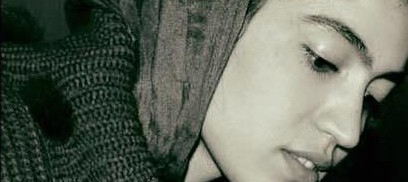I didn’t know them, but I can picture them. They would have been laughing and talking, at the end of the work day, as they rode the bus from work to home in Kabul. The mix of men and women means there was flirting, too.
Most of them were young, under 30, and their careers had tracked with the growth of media itself in Afghanistan. As independent media grew, so did the opportunities for them.
A video editor, pulling together the best visuals into a coherent news package. A graphic designer, helping people notice and understand complex information as it flies across the TV screen. A dubbing artist, speaking in Dari the words of someone who spoke in English or Pashtu.
These are jobs that didn’t exist in Afghanistan 15 years ago.
When the Taliban ruled, there was no TV, no free media, and no mixing of genders at the office because women didn’t have careers.
These are people who didn’t exist 15 years ago in Afghanistan: accustomed to their freedom, their right to talk back, to flirt, to openly question Islam, to make friends with foreigners, to talk about sex.
The Taliban killed seven of them in an attack on their bus Wednesday evening.
Seven … so many…
Even one is so many.
But there are so many others – thousands of journalists in Afghanistan, now – who will keep going, keep getting information out to other Afghans and the world.
Afghans have grown used to their lively media. They know what it means to get information that’s based on facts, news that reports more than the government’s side. Taliban propaganda has always been sophisticated, but Afghans themselves are more savvy now.
That change began to happen in 2002-05, in the years when I was there to work with those first independent journalists. We helped them learn how to ask questions, to tap into their natural curiosity and need to question authority. We gave them guidelines for ethical journalism and guided them in the critical thinking they had to develop.
And when they flirted, fell in love, and rejected their family’s choice of a matched mate, we listened to them.
I didn’t know the seven who died in the suicide attack, but I can see them.
And right behind them, I can see all the rest.
Mourning today. Getting back on the bus to work tomorrow.
Today’s penny is a 2004, the year that the first generation of independent Afghan journalists covered the first free and fair presidential election.
Featured image: Mehri Azizi, 22, graphic designer. Photo via Facebook; photographer unidentified.

Sobering and hopeful at the same time. What a privilege to have been there in the initial stages of journalistic freedom in Afghanistan. Consider the cost for those who continue to bring the truth forward …. There are no words ….
And your important contributions to the changes….immense.
Hi Lisa, I was touched by this post. My mom is a friend of yours and I think I was the recipient of a green cloth bag that came from you, that was created by an artisan in Afganistan many years ago. This post reminded me of this bag that I lovingly called “My Afganistan Bag”. I proudly used it every summer as a lake bag on our boat here in Ohio. It was not particularly suited for a boat or the lake. After several years it was very faded and torn, always so unlike the carryall weatherproof bags on the market that other boater-friends carry. It was noticed a lot because of this lack of suitability and I was afforded the opportunity to tell its amazing back story. A back story you really created.
While I am sorry to hear about those deaths, I am thankful for folks like you who have made a real difference in lives of others.
Sincerely,
kris
Kris, this is such a great story! I’m so glad you read the post and took the time to tell about the bag… While those textiles (pashminas, especially) were a good way to raise money for the girls’ school, they were also an important way to spread awareness and share stories. Thank you so much for telling me yours.